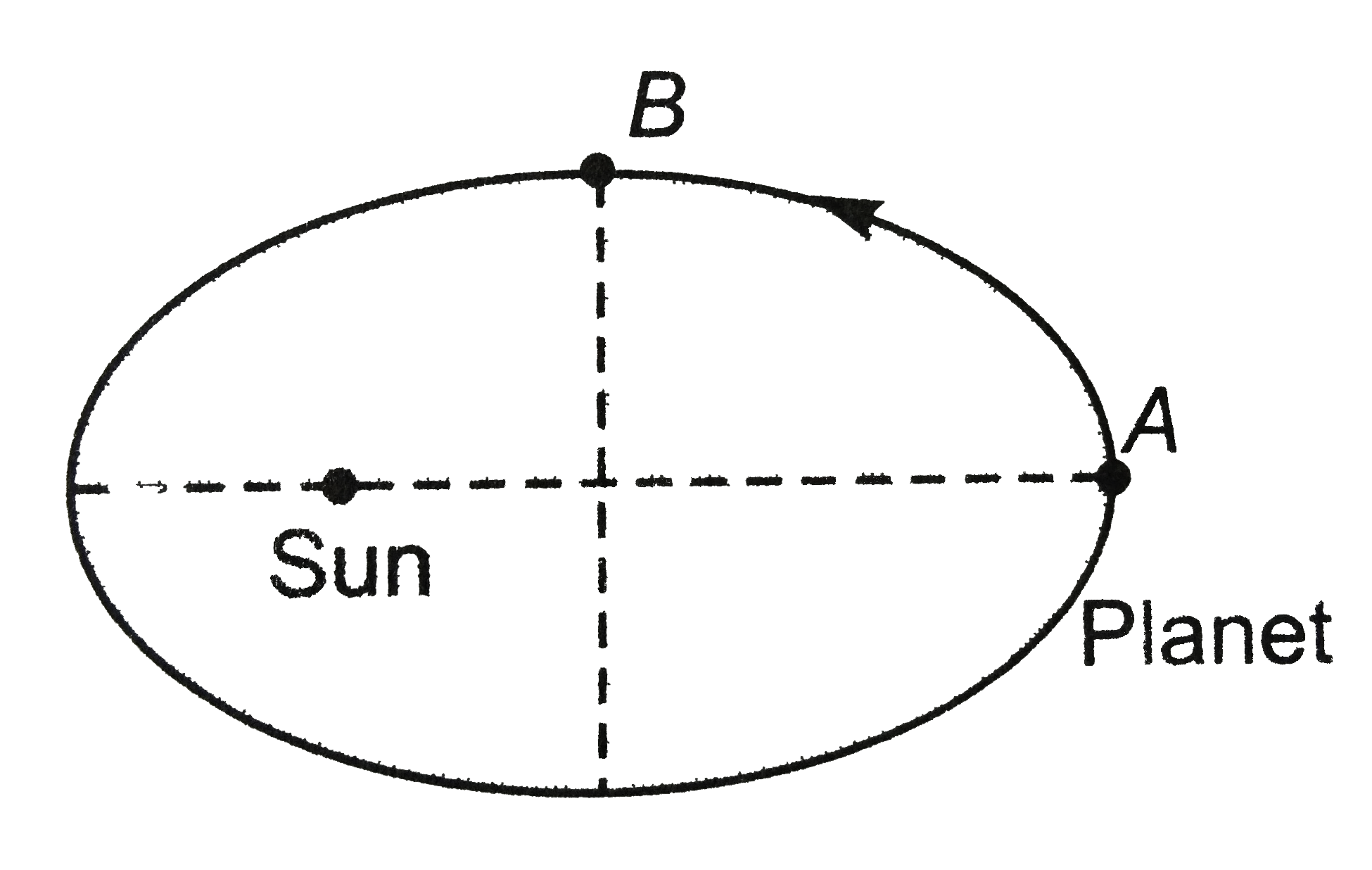The orbit of Pluto is much more eccentric than the orbits of the other planets. That is, instead of being nearly circular, the orbit is noticeably elliptical. The point in the orbit nearest to the Sun is called the perihelion and the point farthest from the Sun is called the aphelion.

At perihelion, the mechanical energy of Pluto's orbit has
its maximum value
its minimum value
the same value at every other point in the orbit
the value which depends on the sense of rotation
The correct Answer is:C
Total energy = constant.
Topper's Solved these Questions
- GRAVITATIONBOOK - CENGAGE PHYSICS ENGLISHCHAPTER - GRAVITATIONEXERCISE - Integer
5 Videos
- GRAVITATIONBOOK - CENGAGE PHYSICS ENGLISHCHAPTER - GRAVITATIONEXERCISE - Fill In The Blanks
5 Videos
- GRAVITATIONBOOK - CENGAGE PHYSICS ENGLISHCHAPTER - GRAVITATIONEXERCISE - Assertion- Reasoning
13 Videos
- FLUID MECHANICSBOOK - CENGAGE PHYSICS ENGLISHCHAPTER - FLUID MECHANICSEXERCISE - INTEGER_TYPE
1 Videos
- KINEMATICS-1BOOK - CENGAGE PHYSICS ENGLISHCHAPTER - KINEMATICS-1EXERCISE - Integer
9 Videos
Similar Questions
The orbit of Pluto is much more eccentric than the orbits of the other planets. That is, instead of being nearly circular, the orbit is noticeably elliptical. The point in the orbit nearest to the Sun is called the perihelion and the point farthest from the Sun is called the aphelion.

At perihelion, the gravitational potential energy of Pluto in its orbit has
View SolutionThe orbit of Pluto is much more eccentric than the orbits of the other planets. That is, instead of being nearly circular, the orbit is noticeably elliptical. The point in the orbit nearest to the Sun is called the perihelion and the point farthest from the Sun is called the aphelion.

As Pluto moves from the perihelion to the aphelion, the work done by gravitational pull of Sun on Pluto is
View Solution
Knowledge Check
A planet is revolving in an elliptical orbit around the sun. Its closest distance from the sun is r and the farthest distance is R. If the velocity of the planet nearest to the sun be v and that farthest away from the sun be V. then v/V is
AR2/r2Br2/R2CR/rDr/RAn artificial satellite is in an elliptical orbit around the earth with aphelion of 6R and perihelion of 2R where R is radius of the earth =6400km. Calculate the eccentricity of the elliptical orbit.
A12B13C14D16
In the figure shown a planet moves in an elliptical orbit around the sun. Compare the speeds, linear and angular momenta at the points A and B.

View SolutionA planet is revolving round the sun in an elliptical orbit, If v is the velocity of the planet when its position vector from the sun is r, then areal velocity of the planet is
View SolutionA planet is moving round the sun in an elliptical orbit as shows. As the planet moves from A to B

View SolutionA planet is revolving around the Sun in an elliptical orbit. Its closest distance from the Sun is r and farthest distance is R. If the orbital velocity of the planet closest to the Sun is v, then what is the velocity at the farthest point?
View SolutionA comet revolves around the sun in an eliptical orbit. When it is closest to the sun at a distance d, its corresponding kinetic energy is k0. If it is farthest from the sun at distance 3d then the corresponding kinetic energy will be
View SolutionA planet is revolving around the Sun in an elliptical orbit. Its closest distance from the sun is rmin. The farthest distance from the sun is rmax if the orbital angular velocity of the planet when it is nearest to the Sun ω then the orbital angular velocity at the point when it is at the farthest distance from the sun is
View Solution
